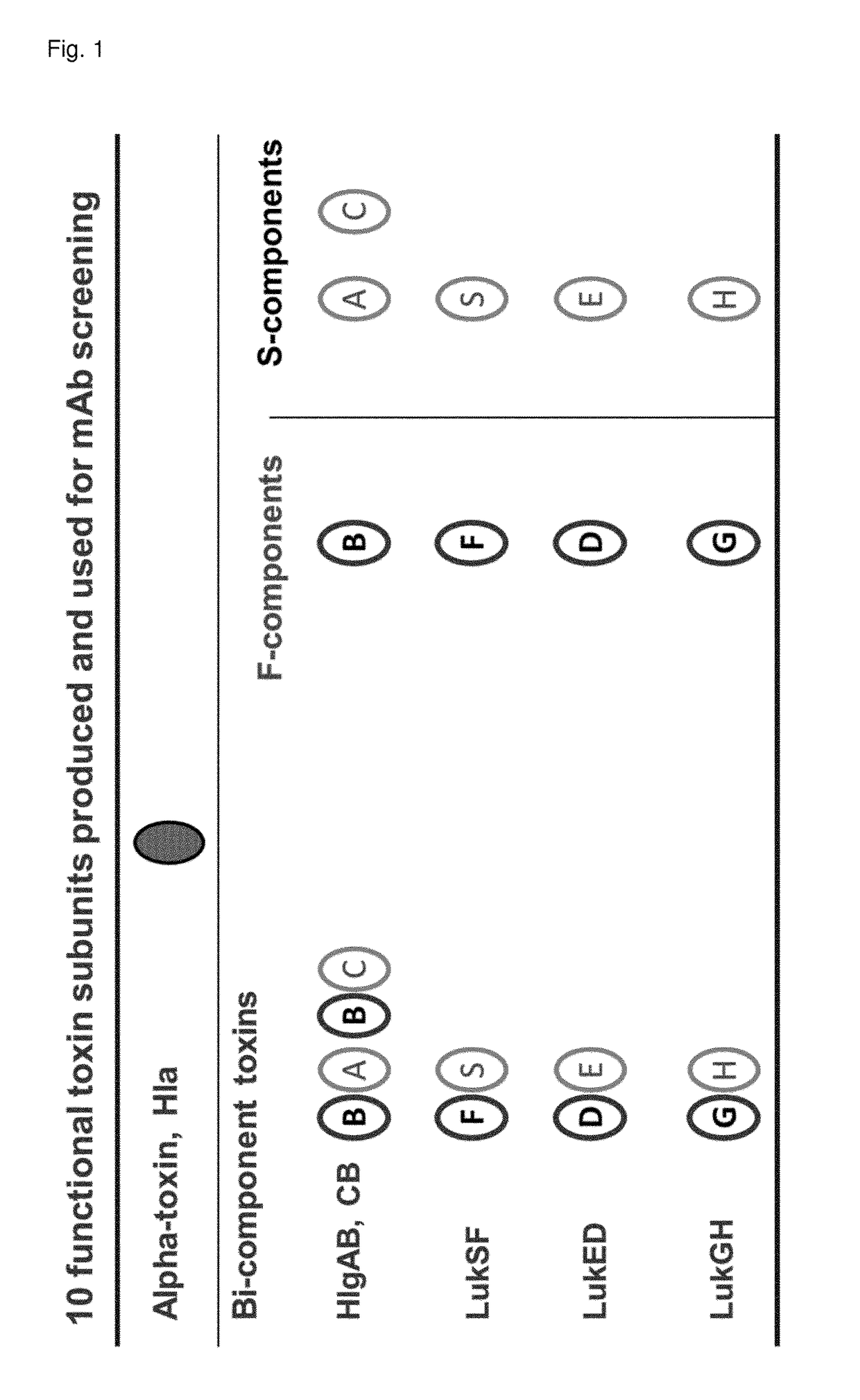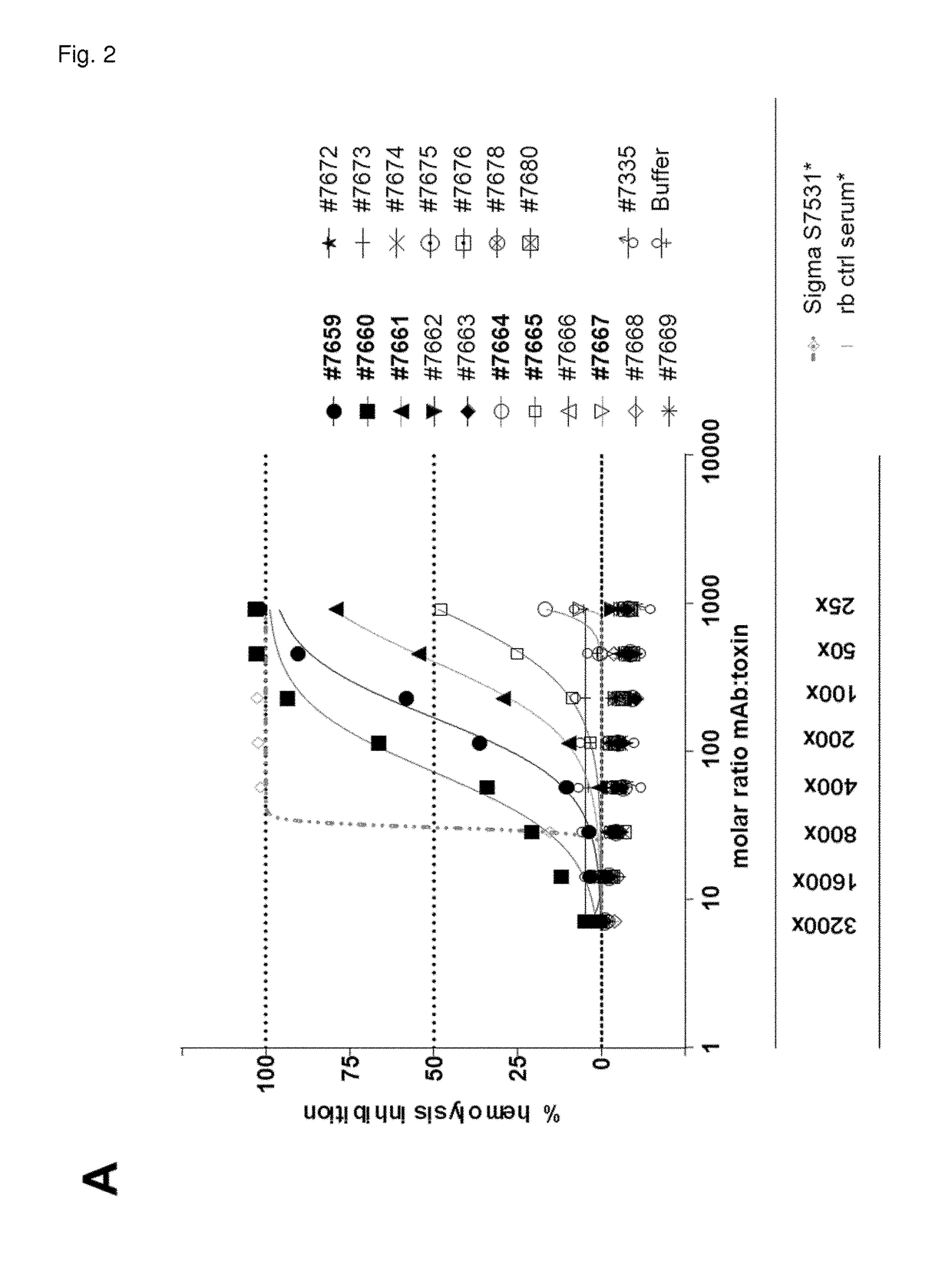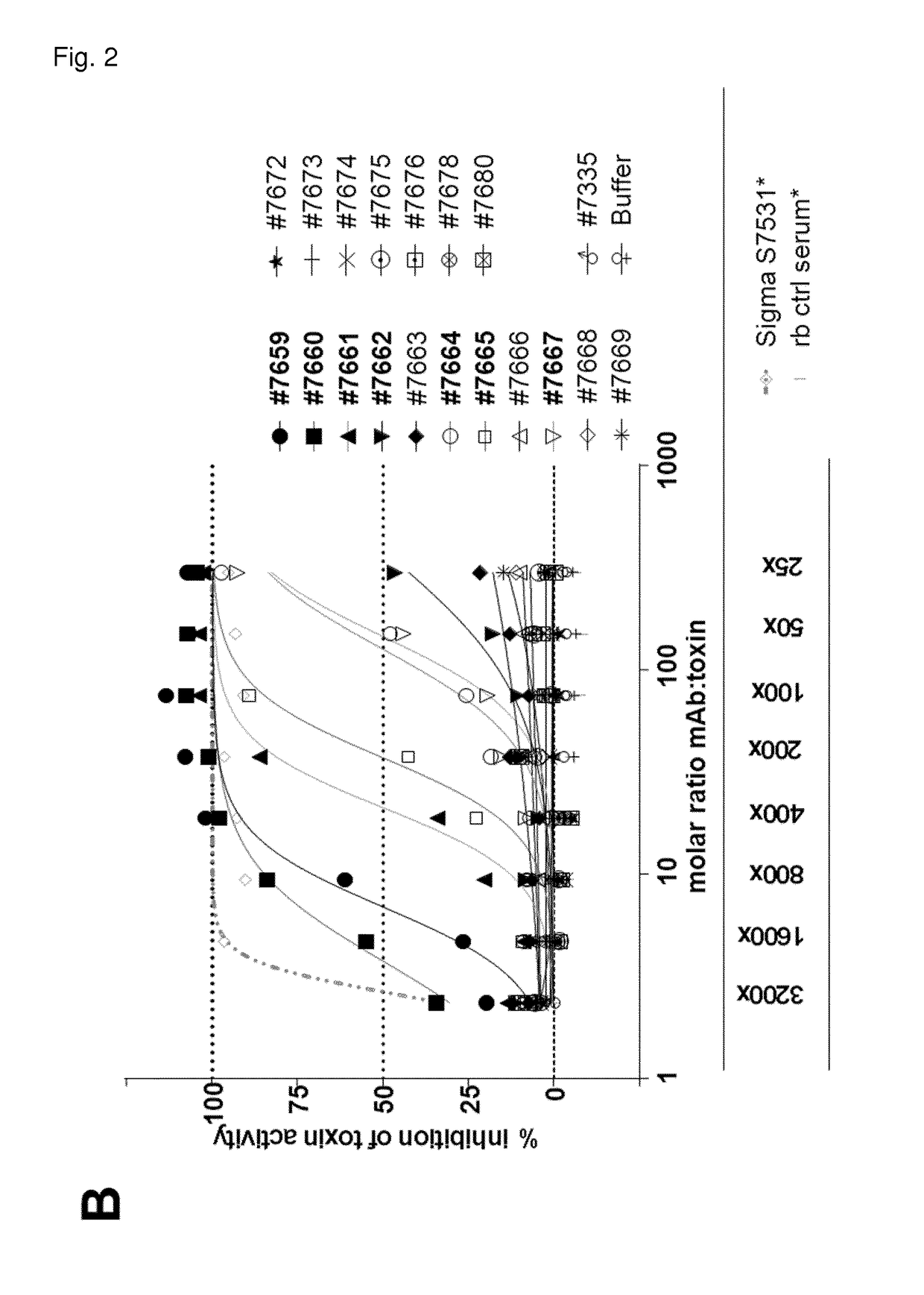Cross-reactive Staphylococcus aureus antibody
a staphylococcus aureus and antibody technology, applied in the field of cross-reactive i > staphylococcus aureus /i > antibody, can solve the problems of difficult development of monoclonal antibody (mab) cocktails comprising more than three components, inability to form avid interactions of antibody types, and inability to cross-react such bi-specific mabs. achieve the effect of improving cross-reactive and cross-neutralizing potency
- Summary
- Abstract
- Description
- Claims
- Application Information
AI Technical Summary
Benefits of technology
Problems solved by technology
Method used
Image
Examples
example 1
n of Recombinant Toxins
[0355]Ten S-aureus toxins—Hla, LukF, LukD, LukS, LukE, HlgA, HlgC, HlgB, LukG and LukH—were produced recombinantly in E. coli (BL21, Rosetta or Tuner DE3) (FIG. 1). Toxin genes for the mature proteins (determined using the SignalP 4.1 Server; www.cbs.dtu.dk) were codon optimized for E. coli expression and generated by gene synthesis based on published genome sequences of Staphylococcus aureus strains USA300_TCH1516, MRSA252 and MSHR1314 (SeqIDs 1 to 28, FIG. 9). All toxins, except for LukG and LukH, were expressed in soluble form with an N-terminal NusA / His6 tag which was removed proteolitically. Purification consisted typically of three chromatographic steps 1) IMAC (Immobilized metal affinity column) 2) cation exchange or IMAC, and 3) size exclusion chromatography. LukG and LukH were expressed without tags in insoluble form, the proteins were refolded from inclusion bodies and purified; purification consisted of two steps on the size exclusion column for Luk...
example 2
of Toxin Binding Human Monoclonal Antibodies
[0357]Toxin binding antibodies were selected by yeast surface display libraries developed according to WO2009 / 036379A2, WO2012009568 and WO2010105256. Toxin molecules were expressed as recombinant E. coli produced proteins and labeled with biotin. All toxins were tested for high purity and integrity, and also for functionality in in vitro assays and in vivo by toxin challenge of mice as described in Example 3.
[0358]A library of yeast cells engineered to express full length human IgG1 antibodies with an approx. 109-10 diversity were incubated with biotin labeled toxins at different concentrations. Yeast cells expressing antibodies with the capacity of binding to the toxins were isolated by magnetic bead selection and fluorescence-activated cell sorting (FACS) employing streptavidin secondary reagents in several successive (up to five) selection rounds. Antibodies were then produced by the selected yeast clones and purified by Protein A affi...
example 3
ation of Human mAbs Able to Neutralize Multiple Staphylococcal Exotoxins
[0359]First, 12 Hla binding mAbs with unique CDR sequences were tested for Hla neutralization in two different in vitro assays using either rabbit red blood cells or the human lung epithelial cell line A549. For the toxin inhibition assay with human lung epithelial cells (A549, HPACC #86012804), cells were trypsinized and plated on the preceding day at a density of 20,000 cells per well (96-well half area luminescence plates, Greiner, Austria) in F12K medium (Gibco, USA) supplemented with 10% FCS and Pen / Strep. Antibodies were serially diluted in F12K medium supplemented with 5% FCS and Pen / Strep (=A549 cell assay medium) in a separate dilution plate and mixed with alpha hemolysin (Ha) purified from bacterial culture supernatant at a fixed concentration [3.03 nM]. After a 1 hour pre-incubation step at room temperature, seeding medium on adherent A549 cells was discarded and replaced by the mAb-toxin mixture. Cel...
PUM
 Login to View More
Login to View More Abstract
Description
Claims
Application Information
 Login to View More
Login to View More - R&D
- Intellectual Property
- Life Sciences
- Materials
- Tech Scout
- Unparalleled Data Quality
- Higher Quality Content
- 60% Fewer Hallucinations
Browse by: Latest US Patents, China's latest patents, Technical Efficacy Thesaurus, Application Domain, Technology Topic, Popular Technical Reports.
© 2025 PatSnap. All rights reserved.Legal|Privacy policy|Modern Slavery Act Transparency Statement|Sitemap|About US| Contact US: help@patsnap.com



